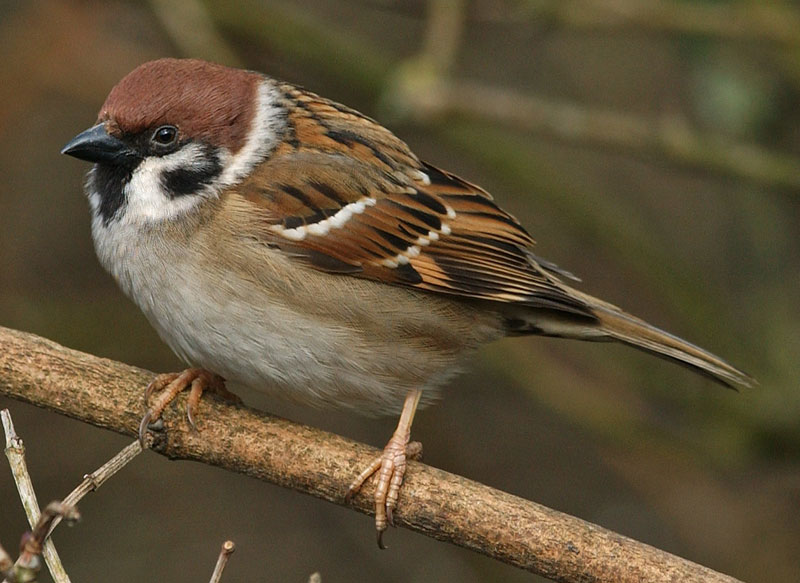
In Australia, the Eurasian Tree Sparrow is present in Melbourne, towns in central and northern Victoria and some centres in the Riverina region of New South Wales.

The American population is sometimes referred to as the "German Sparrow", to distinguish it from both the native American Tree Sparrow species and the much more widespread "English" House Sparrow. Within its limited US range, the Eurasian Tree Sparrow has to compete with the House Sparrow in urban centres, and is therefore mainly found in parks, farms and rural woods. These sparrows are descended from 12 birds imported from Germany and released in late April 1870 as part of a project to enhance the native North American avifauna. Louis and neighbouring parts of Illinois and southeastern Iowa. In North America, a population of about 15,000 birds has become established around St. This sparrow has occurred as a natural vagrant to Gibraltar, Tunisia, Algeria, Egypt Israel and Dubai. It was introduced successfully to Sardinia, eastern Indonesia, the Philippines and Micronesia, but introductions to New Zealand and Bermuda did not take root. The Eurasian Tree Sparrow has been introduced outside its native range, but has not always become established, possibly due to competition with the House Sparrow. dilutus" reaches coastal Pakistan in winter and thousands of birds of this race move through eastern China in autumn. It is sedentary over most of its extensive range, but northernmost breeding populations migrate south for the winter, and small numbers leave southern Europe for North Africa and the Middle East. In South Asia it is found mainly in the temperate zone. It formerly bred in the Faroes, Malta and Gozo. The Eurasian Tree Sparrow's natural breeding range comprises most of temperate Europe and Asia south of about latitude 68°N and through Southeast Asia to Java and Bali. This may have resulted from the small size of the founding North American population and a consequent loss of genetic diversity. A study comparing the vocalisations of the introduced Missouri population with those of birds from Germany showed that the US birds had fewer shared syllable types and more structure within the population than the European sparrows. Other monosyllabic chirps are used in social contacts, and the flight call is a harsh "teck".
TREE SPARROW SERIES
The Eurasian Tree Sparrow has no true song, but its vocalisations include an excited series of "tschip" calls given by unpaired or courting males. The change in mass is due to an increase in blood volume to support active feather growth, and a generally higher water content in the body. Adult and juvenile Eurasian Tree Sparrows undergo a slow complete moult in the autumn, and show an increase in body mass despite a reduction in stored fat. Its contrasting face pattern makes this species easily identifiable in all plumages the smaller size and brown, not grey, crown are additional differences from the male House Sparrow. This sparrow is distinctive even within its genus in that it has no plumage differences between the sexes the juvenile also resembles the adult, although the colours tend to be duller.

The legs are pale brown, and the bill is lead-blue in summer, becoming almost black in winter. The upperparts are light brown, streaked with black, and the brown wings have two distinct narrow white bars.
TREE SPARROW PATCH
The adult's crown and nape are rich chestnut, and there is a kidney-shaped black ear patch on each pure white cheek the chin, throat, and the area between the bill and throat are black. The Eurasian Tree Sparrow is 12.5–14 cm long, with a wingspan of about 21 cm and a weight of 24 g, making it roughly 10% smaller than the House Sparrow.


 0 kommentar(er)
0 kommentar(er)
